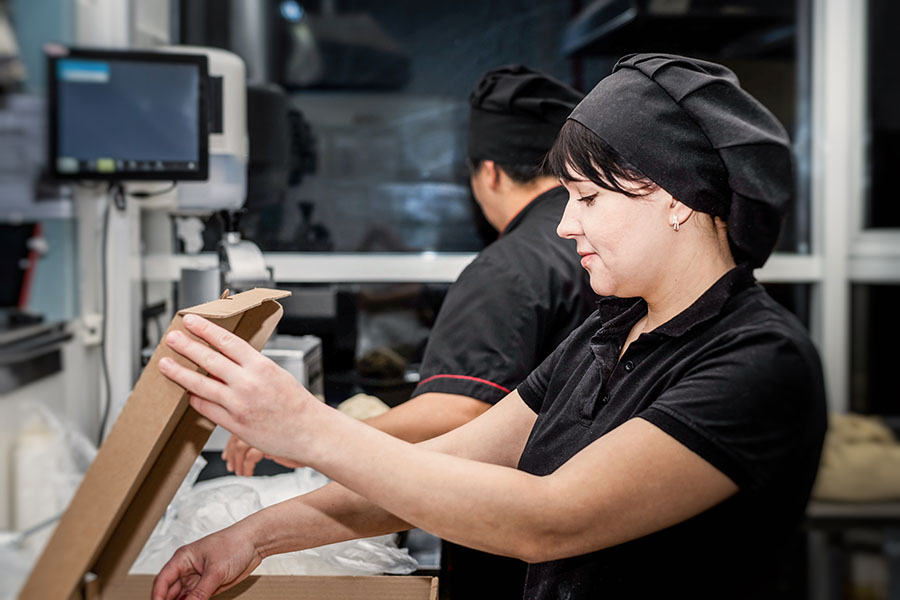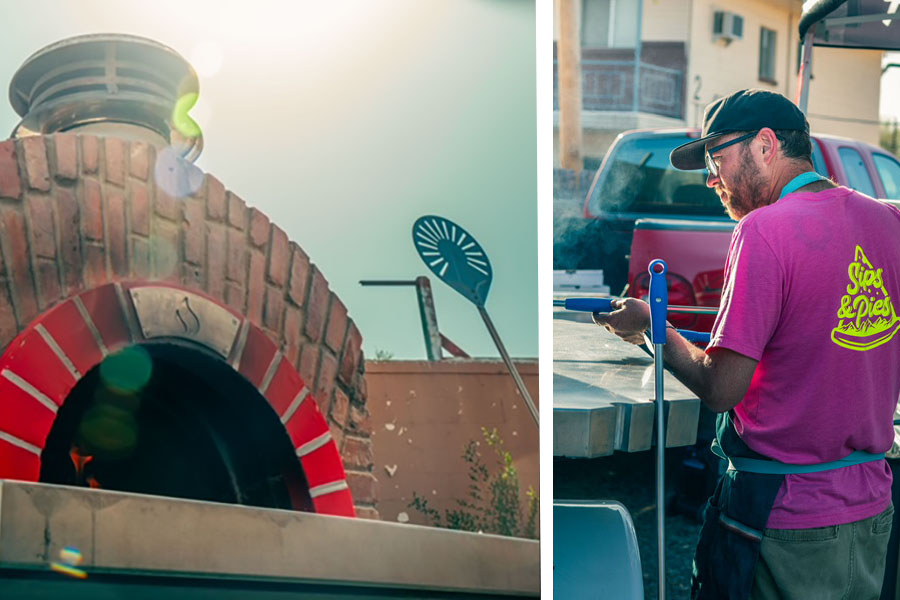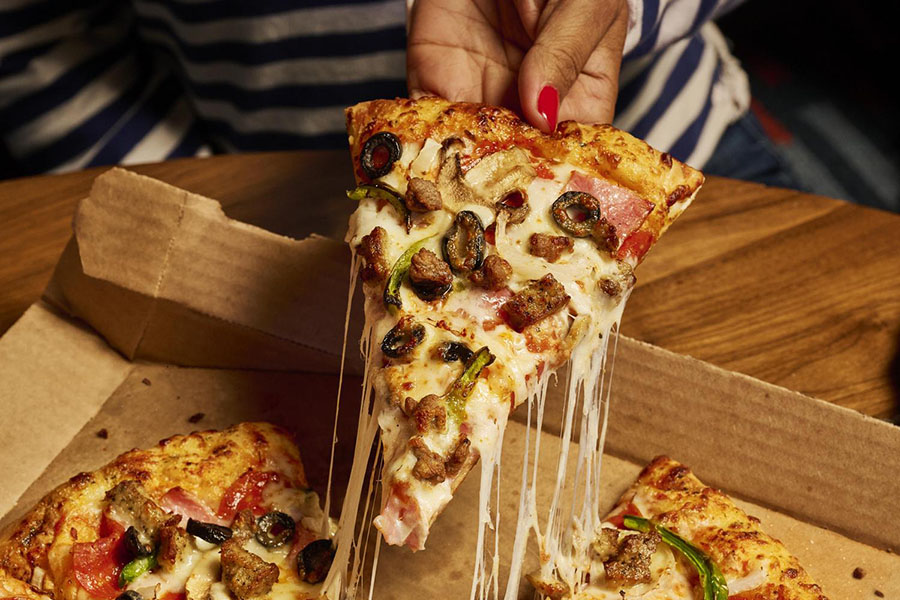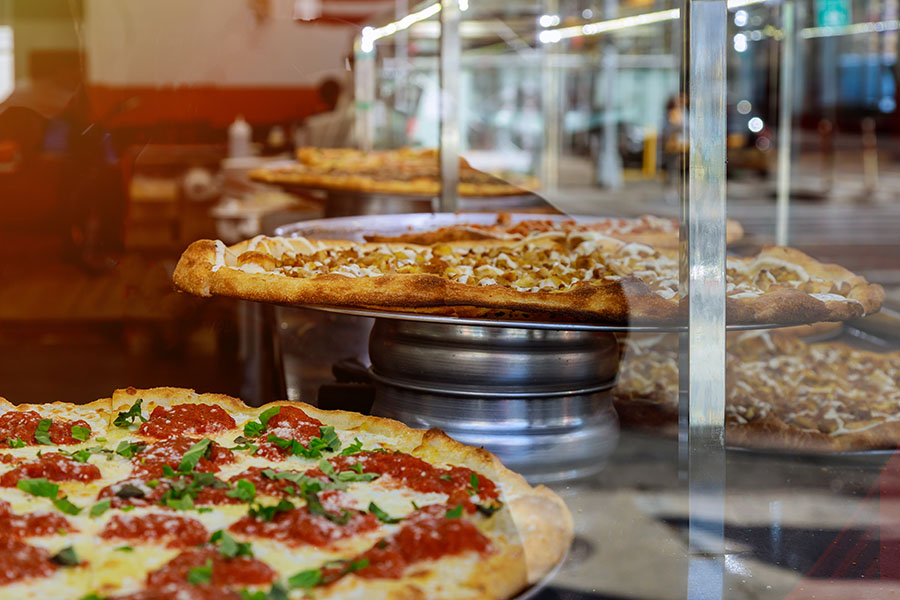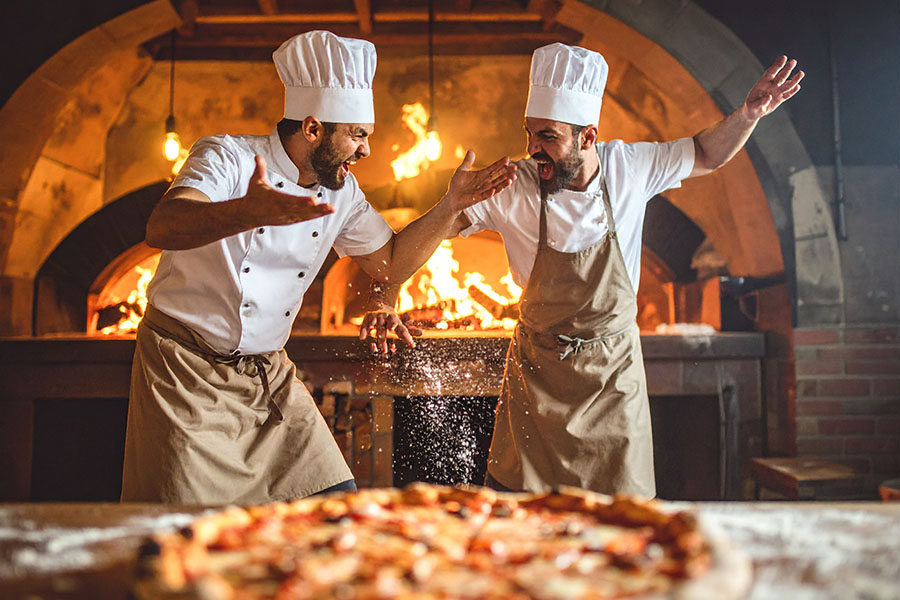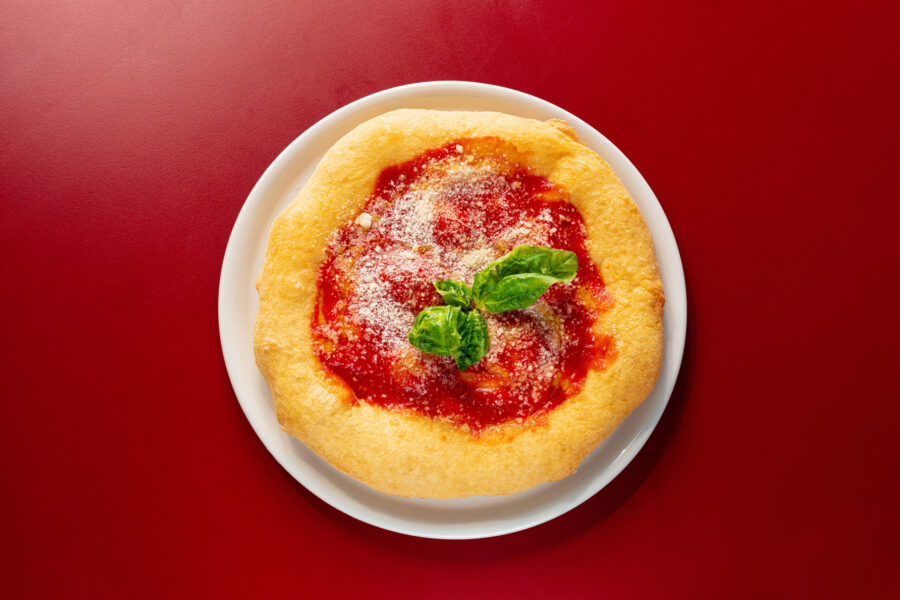A look at the leadership role in the new decade
Jeremy Galvin acknowledges this isn’t the pizzeria business he entered more than two
decades ago, particularly as it relates to the role of manager.
While the foundational basics of the manager’s post — overseeing customer service, scheduling and inventory management among them — remain central to the position, Galvin, president of the 11-unit Master Pizza chain in Ohio, says critical thinking, sound decision making and the soft skills have
become increasingly critical as competition mounts and labor challenges intensify.
“You can’t just go to work and crank up the oven like it used to be,” says Galvin, who helped develop the Romeo’s Pizza chain in Ohio before joining Master Pizza in 2015. “So much more is expected and needed of managers in today’s day and age.”
The pizzeria manager in 2020 …
… embraces servant leadership.
A 37-year veteran of the pizzeria trade, having begun his run with Chicago-based Lou Malnati’s Pizzeria as a 15-year-old before ascending the company’s ranks, Jim D’Angelo says today’s best managers recognize they’re in the people business, not necessarily the pizza business. And as such, they have it in their heart to serve others, customers and staff alike.
“We’re in the people business — always have been and always will be — and that’s why managers who have hospitality in their blood are always going to win,” says D’Angelo, now chief operating officer for the 60-unit Lou Malnati’s chain.
… values staff members.
Rory Brown, hospitality and service manager instructor at the Culinary Institute of America in Hyde Park, New York, reminds that, despite some cutting-edge technological innovations, restaurants still need to rely on people to complete most tasks.
“You wouldn’t buy the cheapest oven and pay no attention to maintaining it with the plan of just getting another one when it breaks down,” Brown says. “We need to look at people the same way – as valued capital, not a resource.”
… has a personality conducive to leading others.
Both Galvin and D’Angelo say the technical skills necessary to manage a pizzeria — scheduling, purchasing goods and seating a dining room among them — can be taught. What’s challenging to teach and arguably much more important: a positive attitude that inspires others.
“I look for attitude because that’s contagious,” Galvin says, adding that Master Pizza’s latest training program for managers focuses solely on interpersonal skills and leadership. “If the manager doesn’t have a positive attitude in hand, it’s a tough climb.”
… is empathetic.
With five generations now in the workforce, Brown says empathetic managers who try to understand their employees and “walk in their shoes” are better positioned for progress and to cultivate deeper employee engagement.
“As a manager, you need to land your message, but it shouldn’t feel like a punch in the gut,” Brown says. “Understanding your employees and where they come from will inform and direct conversations that need to happen and help everyone see a path forward.”
… is present and engaged with team members.
Lou Malnati’s favors a “side-by-side management style” and actively seeks hands-on managers who can support staff across the establishment, D’Angelo says. The company’s best managers work with their team members to coordinate front and back of the house and understand what’s going on in the kitchen as well as with servers.
“Staff want to be joined and know you’re in it with them,” D’Angelo says, adding that managers must nevertheless avoid getting caught in the weeds and understand how to “get in and get out” when supporting staff.
… is aware.
Galvin calls “self-awareness” imperative in today’s managers, who must be willing to evaluate themselves and find responsibility. Absent self-awareness, he notes, managers risk playing the blame game. At the same time, managers must be aware of others’ strengths and weaknesses, which will help them avoid the “assistant manager syndrome” – Galvin’s term for those who struggle to recognize their own shortcomings as well as others’ positive attributes.
“You can’t get the best out of someone unless you are paying attention to what they’re good at,” Galvin charges.
And D’Angelo adds that awareness is even more critical given the
accelerating pace of change. Managers must be adaptable, flexible and willing to grow, all of which starts with awareness.
“You can’t have the if-it’s-not-broke-then-don’t-fix-it mentality,” D’Angelo says. “That just doesn’t fly today.”
… manages etiquette.
While pizza shops have historically been casual environments, today’s manager must ensure a professional, civil atmosphere prevails. Galvin says managers, arguably the most critical staff member in the restaurant, must exercise etiquette and sound decision making that promotes a respectful workplace. Absent this, a store risks negative marketplace banter, disengaged employees eager to leave and, quite possibly, damaging lawsuits.
“Managers must be careful about what they say and do,” Galvin says. “They can’t cross lines with employees and must understand the rules around fraternization and relationships.”
… pursues quality.
As customers have more choices than ever and competition for the consumer’s dollar has intensified alongside expectations for speed, convenience and value, pizzerias must be on their game every day. That reality demands managers who can inspire front and back of the house staff to take pride in what they do. It requires a restaurant leader who strikes a balance between motivating staff and holding them accountable.
“The restaurant business is unforgiving, so managers have to be consistently focused on top-notch quality of product and service,” D’Angelo says.
… thinks critically and creatively.
The sheer volume of paperwork, laws and data has pushed the manager into the back office more often. Managers capable of thinking critically and creatively, however, won’t let those administrative responsibilities overwhelm them. By leveraging technology like scheduling or purchasing software, managers can more quickly address administrative duties and focus on the critical thinking and creative tasks that can drive restaurant performance.
“Maybe it’s understanding customer buying patterns or creating new revenue sources or marketing opportunities, but strong managers are going to have to bring creative thought to their job more and more,” Brown contends.
Chicago-based writer Daniel P. Smith has covered business issues and best practices for a variety of trade publications, newspapers, and magazines.


